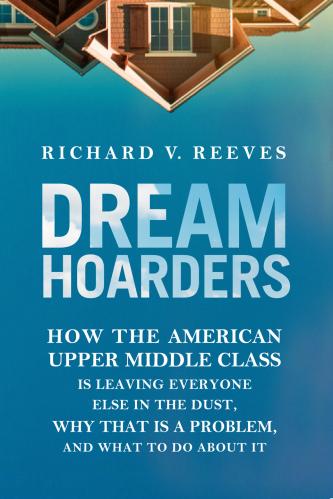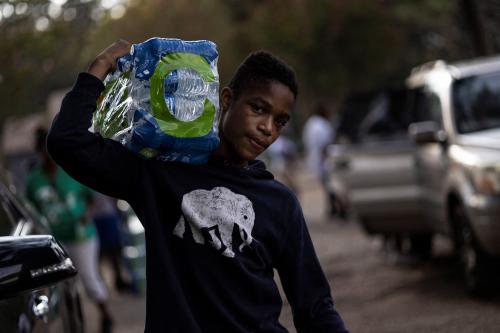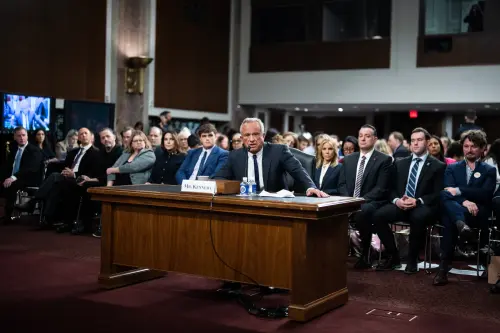Today, the U.S. struggles with significant poverty that is made worse by a growing inequality chasm, and the recently released GOP tax reform plan only exacerbates what has become an increasingly dire trend for poor and low-income families and for black and Hispanic Americans. The plan, which lacks significant details, provides its largest and most enduring tax breaks for wealthy Americans and for corporations. The wealthier you are, the more likely you are to benefit from the proposed tax changes. The poorer you are, the less likely you are to leave poverty.
Why is this a problem? American poverty brings with it significant human, economic, and political costs. The combination of poverty and inequality affects all Americans whether we are poor or not. To understand why, let’s take a look at the trends.
Last week, two reports that tell us something about the state of inequality and poverty in the U.S. were released. The first, the Federal Reserve’s 2016 Survey of Consumer Finances (SCF), reveals that just about everyone has recovered from the Great Recession. Blacks, Hispanics and Americans without college degrees showed the greatest gains in wealth. However, the 2016 SCF also reveals that the levels of wealth for blacks, Hispanics and those without a college degree were so low after the Great Recession that any increase would seem proportionally large. In fact, the SCF also highlights growing inequality—the top one percent of households hold 24 percent of income in the U.S. and the median net wealth of white households, now $171,000, is 10 times that of black households and over eight times that of Hispanic households.
The second report, the inaugural National Survey of Financial Well-Being, issued by the Consumer Financial Protection Bureau (CFPB), reports that “Of the nationally representative sample of consumers surveyed, 43 percent of consumers report struggling to pay bills. Additionally, over one third—34 percent—of all consumers surveyed reported experiencing material hardships in the past year. For the survey, examples of material hardships include running out of food, not being able to afford a place to live, or lacking the money to seek medical treatment.”
Let me distill that: over one third of American households had trouble putting food on the table, putting a roof over their heads, or getting medical care; blacks and Hispanics are falling further behind whites in net wealth; and 99 percent of Americans hold a diminishing 76 percent share of income in the U.S. These are all alarming trends, but to have one-in-three consumers report that they cannot regularly put food on the table in the U.S., one of the wealthiest countries in the world, is the most deeply disturbing.
Poverty and inequality are intertwined and both have an impact on the American economy. We need to think about how current trends in poverty and inequality affect future economic contributors. We already know that by age three, inequality is clear—the children of the wealthy attend school, while those of poor and low-income families stay home. In addition, we know that high levels of inequality mean that people who are born near the bottom quintile tend to stay there. Why? Top earners, the one percent, have more money to invest in their children and these children are better positioned for economic opportunities than their poor counterparts. The result of this, according to Raj Chetty’s Equality of Opportunity Project, is that only 60 percent of children from poor families are likely to be working by age 30, compared to 80 percent of those from median or higher income families. Think of the economic and social consequences of low economic participation rates: increased isolation, delayed brain development for poor children, elevated crime rates, higher spending for health care and social benefits, and increased despair in some communities.
It is impossible to evaluate the GOP tax plan without this context. This tax reform plan is a petri dish for increasing inequality. As the New York Times reports, “The bottom 99 percent of taxpayers would see their federal tax rates drop 0.4 to 1.7 percentage points on average next year. But the top one percent would benefit much more, with average tax rates falling by 5.7 percentage points.” And the tax cuts would shrink for every group except the top one percent by 2027.
Furthermore, when we evaluate what the tax reform plan will mean for low-income and minority households, we also have to take into account the federal budget environment. President Trump’s budget calls for cuts in a range of social programs from housing subsidies to food assistance. Such a miserly budget, in combination with the tax reform plan, could mean the loss of some very important services for low-income and poor Americans. For black and Hispanic families that fall into these categories, the loss of these services would likely mean increased financial and psychological stress that is unlikely to be offset by the very modest short-term improvements in taxes paid and after-tax income that might result from the initial version of the GOP tax reform plan.
Overall, given the relative position of blacks and Hispanics in the economy, it’s hard to see how this tax plan would not depress their opportunities for greater equity in the future. In other words, this tax reform plan gives a lift to growing inequality, and signals that the GOP is okay with persistent poverty and with the inability of one-third of us to feed our kids. It’s time to ask ourselves, how do we craft tax reform for the long term—reform that tackles American poverty and inequality and creates the conditions for inclusive economic growth? On that front, we need a lot more work and innovation than what is currently on offer.
The Brookings Institution is committed to quality, independence, and impact.
We are supported by a diverse array of funders. In line with our values and policies, each Brookings publication represents the sole views of its author(s).





Commentary
Tax reform in the age of inequality
October 2, 2017